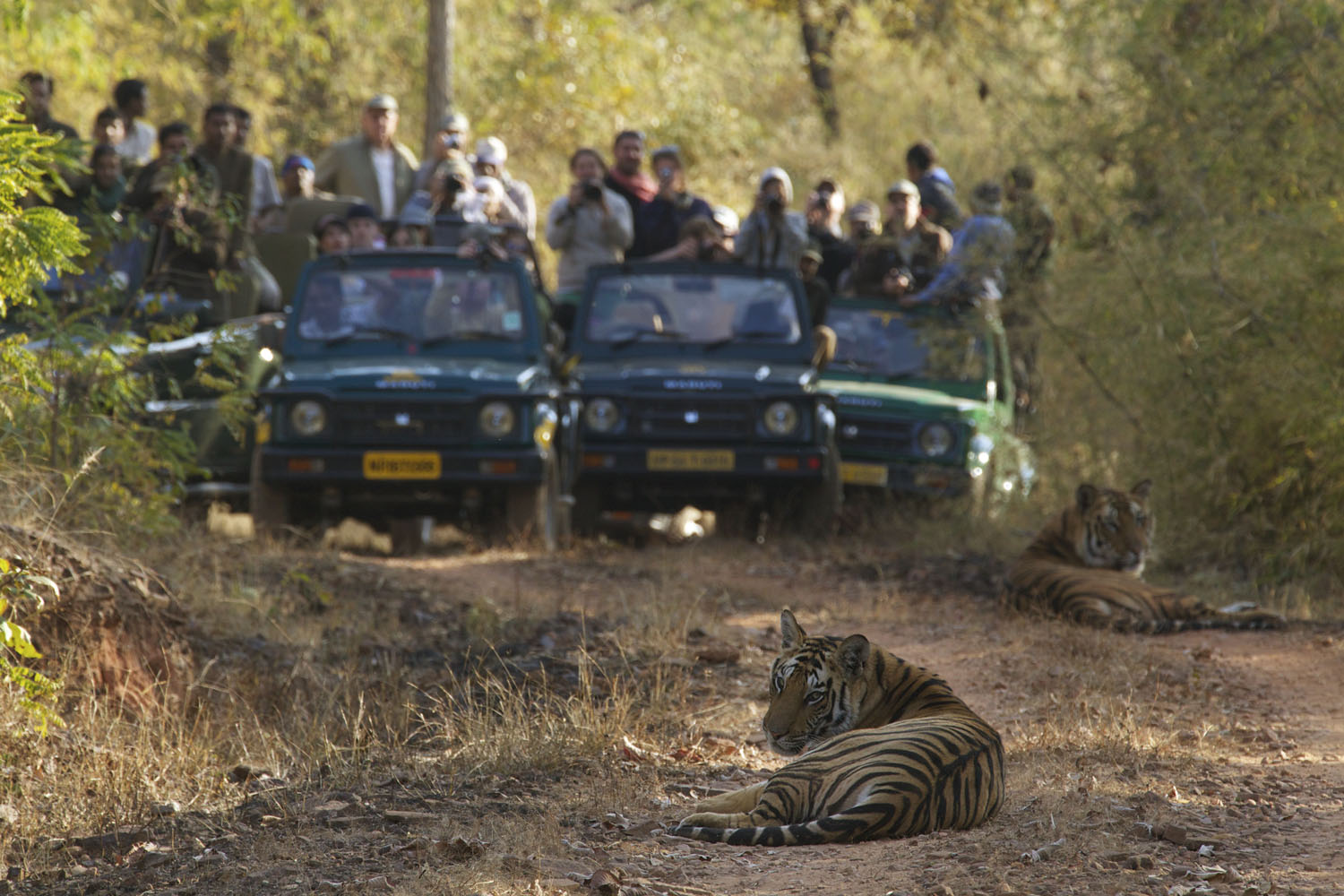
Armed hunters in northern India are stalking a female tiger that is thought to have killed at least eight people since late December, according to AFP. The tiger is believed to be one of the 200 or so Royal Bengal tigers that live in Jim Corbett National Park, established in the early 20th century to protect the endangered animals. Just weeks ago, another tiger that authorities say killed three people in the southern state of Tamil Nadu was shot dead, and in December, a tiger in the southern state of Karnataka that reportedly killed three people was captured.
Conservationists blame humans moving into tigers’ natural habitat — not tigers’ growing taste for people — for the rise in tiger attacks. Another factor is the well-intentioned, but perhaps ill-planned, overstocking of small conservation areas, forcing too many tigers to compete for the same limited resources. Though some activists have criticized officials for dispatching hunters to kill the tigers, others point out that an unabated spate of deadly attacks may do more harm than good for the overall effort to protect the species. There are only 1706 tigers left in the wild in India, according to World Wildlife Fund (WWF). Their habitat, and their prey’s, is shrinking across the subcontinent, as forests are cleared for roads and development.
More Must-Reads from TIME
- Where Trump 2.0 Will Differ From 1.0
- How Elon Musk Became a Kingmaker
- The Power—And Limits—of Peer Support
- The 100 Must-Read Books of 2024
- Column: If Optimism Feels Ridiculous Now, Try Hope
- The Future of Climate Action Is Trade Policy
- FX’s Say Nothing Is the Must-Watch Political Thriller of 2024
- Merle Bombardieri Is Helping People Make the Baby Decision
Contact us at letters@time.com